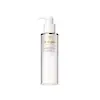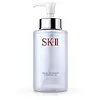What's inside
What's inside
 Key Ingredients
Key Ingredients

 Benefits
Benefits

 Concerns
Concerns

 Ingredients Side-by-side
Ingredients Side-by-side

Water
Skin ConditioningButylene Glycol
HumectantDipropylene Glycol
HumectantGlycerin
HumectantPEG/PPG-14/7 Dimethyl Ether
Skin ConditioningPEG-60 Glyceryl Isostearate
Phenoxyethanol
PreservativeEthylhexylglycerin
Skin ConditioningTheanine
EmollientPEG-8 Glyceryl Isostearate
EmollientTrehalose
HumectantSodium Citrate
BufferingRosmarinus Officinalis Leaf Water
MaskingParfum
MaskingCitric Acid
BufferingDisodium EDTA
Sodium Polyacrylate
AbsorbentDipotassium Glycyrrhizate
HumectantSerine
MaskingGlycine
BufferingAverrhoa Carambola Leaf Extract
HumectantTocopherol
AntioxidantSodium Acetylated Hyaluronate
HumectantSodium Hyaluronate
HumectantAngelica Acutiloba Root Extract
Skin ConditioningHydrolyzed Silk
HumectantHydrolyzed Conchiolin Protein
Skin ConditioningPerilla Ocymoides Leaf Extract
TonicWater, Butylene Glycol, Dipropylene Glycol, Glycerin, PEG/PPG-14/7 Dimethyl Ether, PEG-60 Glyceryl Isostearate, Phenoxyethanol, Ethylhexylglycerin, Theanine, PEG-8 Glyceryl Isostearate, Trehalose, Sodium Citrate, Rosmarinus Officinalis Leaf Water, Parfum, Citric Acid, Disodium EDTA, Sodium Polyacrylate, Dipotassium Glycyrrhizate, Serine, Glycine, Averrhoa Carambola Leaf Extract, Tocopherol, Sodium Acetylated Hyaluronate, Sodium Hyaluronate, Angelica Acutiloba Root Extract, Hydrolyzed Silk, Hydrolyzed Conchiolin Protein, Perilla Ocymoides Leaf Extract
Paraffinum Liquidum
EmollientIsopropyl Palmitate
EmollientPEG-20 Glyceryl Triisostearate
EmollientWater
Skin ConditioningSorbeth-30 Tetraoleate
EmulsifyingPhenoxyethanol
PreservativePEG-8 Diisostearate
EmulsifyingButylparaben
MaskingEthylparaben
PreservativeGalactomyces Ferment Filtrate
HumectantBHT
AntioxidantPropylparaben
PreservativeSodium Benzoate
MaskingHexyldecanol
EmollientPhenethyl Alcohol
MaskingRosa Canina Fruit Oil
EmollientButylene Glycol
HumectantPyrus Malus Seed Extract
Skin ConditioningGlycerin
HumectantMethylparaben
PreservativeMoringa Oleifera Seed Extract
Skin ConditioningParaffinum Liquidum, Isopropyl Palmitate, PEG-20 Glyceryl Triisostearate, Water, Sorbeth-30 Tetraoleate, Phenoxyethanol, PEG-8 Diisostearate, Butylparaben, Ethylparaben, Galactomyces Ferment Filtrate, BHT, Propylparaben, Sodium Benzoate, Hexyldecanol, Phenethyl Alcohol, Rosa Canina Fruit Oil, Butylene Glycol, Pyrus Malus Seed Extract, Glycerin, Methylparaben, Moringa Oleifera Seed Extract
Ingredients Explained
These ingredients are found in both products.
Ingredients higher up in an ingredient list are typically present in a larger amount.
Butylene Glycol (or BG) is used within cosmetic products for a few different reasons:
Overall, Butylene Glycol is a safe and well-rounded ingredient that works well with other ingredients.
Though this ingredient works well with most skin types, some people with sensitive skin may experience a reaction such as allergic rashes, closed comedones, or itchiness.
Learn more about Butylene GlycolGlycerin is already naturally found in your skin. It helps moisturize and protect your skin.
A study from 2016 found glycerin to be more effective as a humectant than AHAs and hyaluronic acid.
As a humectant, it helps the skin stay hydrated by pulling moisture to your skin. The low molecular weight of glycerin allows it to pull moisture into the deeper layers of your skin.
Hydrated skin improves your skin barrier; Your skin barrier helps protect against irritants and bacteria.
Glycerin has also been found to have antimicrobial and antiviral properties. Due to these properties, glycerin is often used in wound and burn treatments.
In cosmetics, glycerin is usually derived from plants such as soybean or palm. However, it can also be sourced from animals, such as tallow or animal fat.
This ingredient is organic, colorless, odorless, and non-toxic.
Glycerin is the name for this ingredient in American English. British English uses Glycerol/Glycerine.
Learn more about GlycerinPhenoxyethanol is a preservative that has germicide, antimicrobial, and aromatic properties. Studies show that phenoxyethanol can prevent microbial growth. By itself, it has a scent that is similar to that of a rose.
It's often used in formulations along with Caprylyl Glycol to preserve the shelf life of products.
Water. It's the most common cosmetic ingredient of all. You'll usually see it at the top of ingredient lists, meaning that it makes up the largest part of the product.
So why is it so popular? Water most often acts as a solvent - this means that it helps dissolve other ingredients into the formulation.
You'll also recognize water as that liquid we all need to stay alive. If you see this, drink a glass of water. Stay hydrated!
Learn more about Water